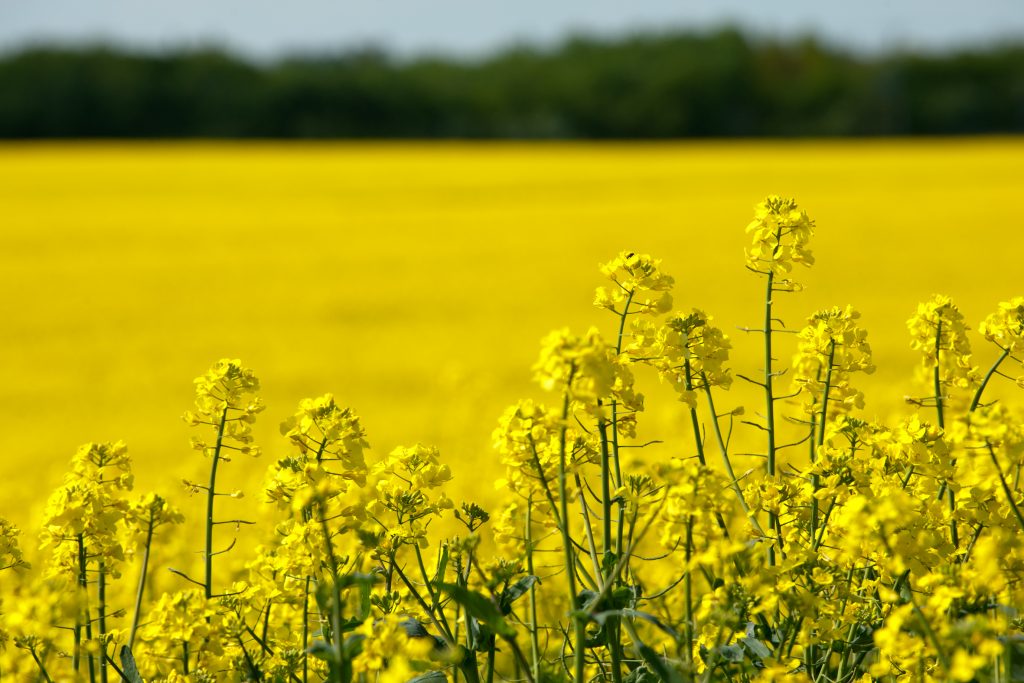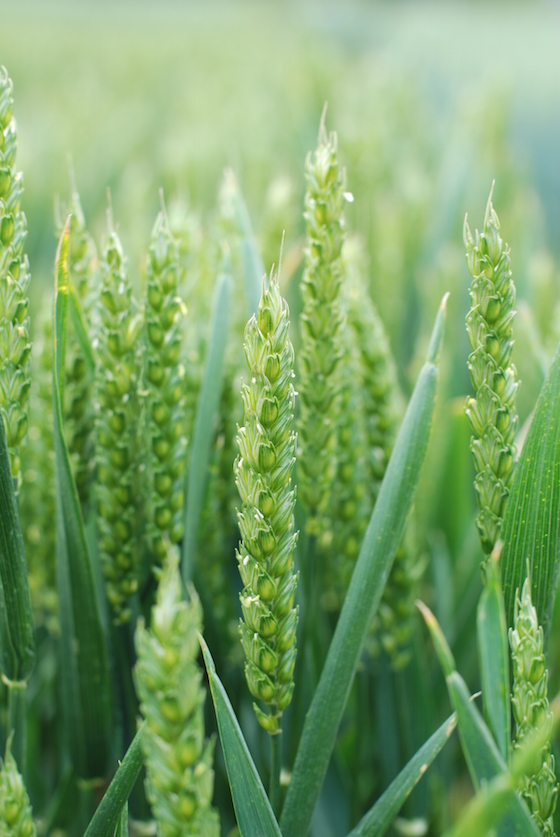Oilseed rape & winter wheat BASF overview
27th February 2019
Oilseed Rape Overview Current spring-like weather means decisions have to be made regarding oilseed rape agronomy. An overview of crops across the UK by BASF Agronomy Managers reveals there are
Oilseed Rape Overview
Current spring-like weather means decisions have to be made regarding oilseed rape agronomy. An overview of crops across the UK by BASF Agronomy Managers reveals there are some very forward crops, however, in some areas pests have been causing problems. Careful nutrition and plant growth regulator (PGR) programmes will be required to manage spring canopies and maximise yield.
Scott Milne in Scotland said, “The size of the oilseed rape canopy is a critical indicator for fertiliser application and plant growth regulation decisions. Measuring a crop’s green area index (GAI) during February and early March, prior to stem extension, is the most effective way to plan fertiliser and PGR strategies over the coming month to six weeks.”
The BASF GAI tool has been developed to provide an accessible and consistent method for estimating the GAI and is available on iTunes.
Across the country BASF’s Agronomy Managers have been out assessing oilseed rape crops and measuring GAIs. In the west Robin Rose said, “Crops are further ahead than normal having continued to grow all winter, tapping into unutilised nitrogen from the previous crop and we are now seeing active spring growth. A lot of the crops have a GAI above 2 already, and some are just going into stem extension.”
In the rest of the UK the situation is more variable; Andrew Clune in the south and Matthew Keane in the east report GAIs ranging from 0.8 – 2. Mr Keane added, “ There are a lot of cabbage stem flea beetle larvae in the leaf petioles of oilseed rape plants, as yet they haven’t made their way into the stem but I am fearful of the impact that the larval damage is going to have at harvest.”
Pests of a different variety are currently troubling Scottish growers, Scott Milne said, “Recent attacks by pigeons have caused crops to go back quite dramatically. However, I am not concerned, they will recover.”
Disease wise the Agronomy Managers urge careful monitoring for Light Leaf Spot (LLS). Robin Rose said, “ I have just started to see early signs of LLS coming back into the crop.There is also some phoma in the crop which is not going to be an issue as it is really just on the old dying leaves.”
With promising yield potential in many crops it makes sense to get crop canopy management right to ensure maximum profitability.
Mr Clune said, “ If you measure the GAI of your crop just prior to stem extension and it has a GAI of more than 0.8, then it is economic to treat the crop with a PGR. Bigger is not better in terms of oilseed rape canopies. Small canopies, with an optimum GAI of 3.5 at flowering, capture light more efficiently. Caryx (metconazole and mepiquat chloride) is a true PGR and has a wide application window, it can be used from the start of stem extension through to yellow bud.
Applying Caryx shortens and strengthens the main stem, which helps manage the lodging risk and Caryx changes the architecture of the canopy; you have longer, lower primary branches and a more open canopy that lets in more light producing more seeds/m2 and a higher yield. ” Mr Keane added, “Caryx also increases rooting at depth, which really helps in drought years because that is where the moisture is.”
Mr Rose commented, “Because the crops in my area are so big and forward they have a need for a double hit of PGR this year. The rooting is as good as I have ever seen it. Clearly an early application of Caryx will both shorten the crop and encourage further rooting but because we have LLS in the crop, we are going to apply tebuconazole early because it will shorten the stem and sort the LLS out. We are then planning to use the Caryx at the later timing of green/yellow bud to manipulate the canopy.”
Winter Wheat Overview
In Norfolk, Hugo Pryce said, “The wheat has come through the winter pretty well, even later drilled crops which went in after roots in November have done well and now have up to 3 tillers. Some of the earlier drilled crops are very forward and lush, so they will need a robust PGR programme to keep them standing up.”
In the south, Andrew Clune echoed this, “Early crops, drilled in September and the first part of October are absolutely storming ahead and are at least at GS23. The later drilled crops, from mid October onwards are not as advanced but it is all looking good.
Over in the West, Robin Rose said, “Here, crops have continued to grow on almost all the way through the winter, fuelled not just by the weather but the fact that there is an awful lot of residual Nitrogen in the soil, from the previous crops. Because of the drought last year a lot of that fertiliser wasn’t taken up, so this is available to the wheat and it is very green. It is much more proud, and the leaf area is much greener than what we had this time last year. Growth stage wise it is not into stem extension yet but its well tillered, anywhere from GS 23 to 27.”
In Scotland, Scott Milne painted a similar picture, “What a difference a year makes! This year winter wheat crops are corner to corner, green and well tillered.”
Disease wise, the Agronomy Managers are reporting that yellow rust does not seem to be an issue as yet, with Septoria and mildew the main concerns.
Mr Rose said, “Here in the west, there are significantly higher levels of Septoria and mildew disease in crops, compared to this time last year. We have had a few sharp frosts but they have not affected the mildew.”
However in the south, Mr Clune said, “Disease levels are not heavier than usual, there is nothing there that is not where I’d expect it to be. The T0 spray, applied as leaf four emerges, should provide a strong foundation to the Septoria control programme; protecting new growth and clearing up disease in the bottom of the crop. If there is adverse weather at T1 timing then the T0 buys a little bit of insurance.
I base the T0 around chlorothalonil, at 1 l/ha which acts as an anti-sporulant against Septoria, slowing down the spread to new growth. This reduces the pressure on the SDHIs that you are coming on with at T1.
If yellow rust is present then pyraclostrobin (Comet 200) at 0.3-0.4 l/ha, is still doing very very well with yellow rust control and it also brings greening benefits. If there is a heavy mildew infestation or it is a mildew susceptible variety then add a specific mildewicide.”
Mr Milne said, “Many crops are forward and well tillered and the T0 fungicide timing fits well with the plant growth regulator application in winter wheat. A programme approach gives the best results as it is the most consistent way to help create both the optimum canopy and ear number for yield.
Canopy (prohexadione-calcium + mepiquat chloride) is an excellent choice from GS30 onwards, when growing conditions can be variable, as it is active from just 5oC. Canopy is made up of two components; the prohexadione-calcium gets to work straight away whereas the mepiquat chloride needs slightly warmer temperatures and so having two different actives can lead to persistence.”
Mr Pryce added, “At GS30 Canopy helps balance and strengthens the tillers, creating a more even crop and uniform leaf emergence which helps accurate fungicide targeting. Canopy also thickens and strengthens the 1st internode as it develops and increases the root spread and depth, giving better anchorage and water and nutrient uptake as well.”



